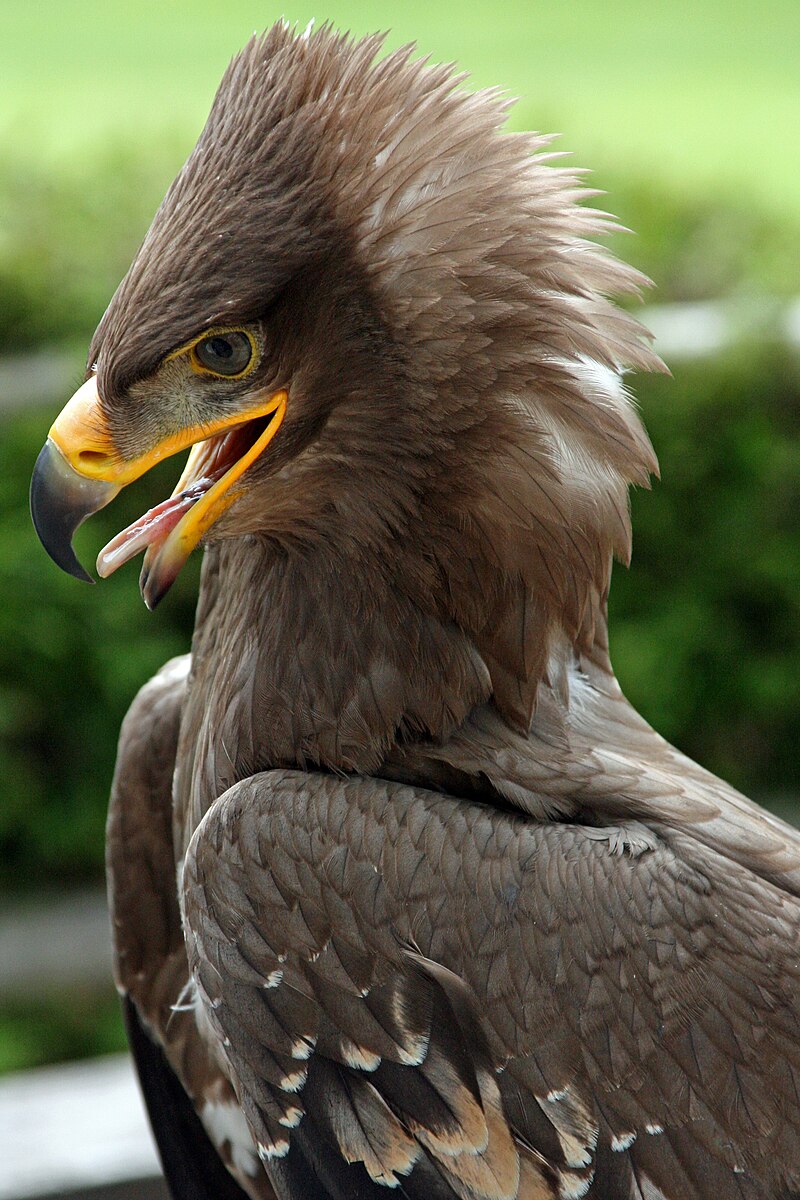Steppe eagles, like all eagles, belong to the family Accipitridae and are large birds of prey. They primarily feed on small-sized mammals, birds, reptiles, insects, and carrion. However, they are somewhat specialized predators of particular mammals such as ground squirrels while breeding and, during non-breeding times, feed on various foods including insect swarms, semi-altricial young of assorted animals, landfills, and carrion.
Steppe Eagles and Carrion
Steppe eagles are opportunistic feeders and will eat what is available to them. They have been observed feeding on brown rats and rock doves in Altai Town, Kazakhstan, during the non-breeding season. In Zimbabwe, steppe eagles have been estimated to eat approximately 1600-2200 termites a day, which can be attainable in about 3 hours of feeding. The stomachs of two dissected steppe eagles contained 630 and 930 termite heads, respectively.
Feeding Habits of Steppe Eagles
 Image source: Steppe Eagle by Fimb
Image source: Steppe Eagle by Fimb
Steppe eagles are known to exploit a certain food source, termite alates, during rain fronts and humidity in southern Africa. They can become locally rather insectivorous to the exception of virtually any other foods, flying down when termites are emerging or waiting on foot and then grabbing them.
During the breeding season, steppe eagles are somewhat specialized predators of particular mammals such as ground squirrels. However, during non-breeding times, they feed on various foods including insect swarms, semi-altricial young of assorted animals, landfills, and carrion.
Nesting and Breeding Habits of Steppe Eagles
Steppe eagles are monogamous and form long-lasting pair bonds. Their breeding season lasts from late March or early April to roughly late August, although several steppe eagles can remain on their breeding grounds until at least October. The nest is a large stick platform, varying greater in size based on available materials. Most nests are around 70-100 cm (28-39 in) in diameter and around 20-50 cm (7.9-19.7 in) deep. It is lined with twigs and much clutter. The nest is usually placed in an exposed site among stones, often on a hummock or sometimes low bushes and a spot on the ground which is usually raised slightly above the mean layout of the environment.
Conclusion
In conclusion, steppe eagles are opportunistic feeders that primarily feed on small-sized mammals, birds, reptiles, insects, and carrion. They are known to exploit a certain food source, termite alates, during rain fronts and humidity in southern Africa. During the breeding season, they are somewhat specialized predators of particular mammals such as ground squirrels, while during non-breeding times, they feed on various foods including insect swarms, semi-altricial young of assorted animals, landfills, and carrion.
References:
– Wikipedia – Steppe Eagle
– Earthlife – Steppe Eagles
– Animalia – Steppe Eagle

